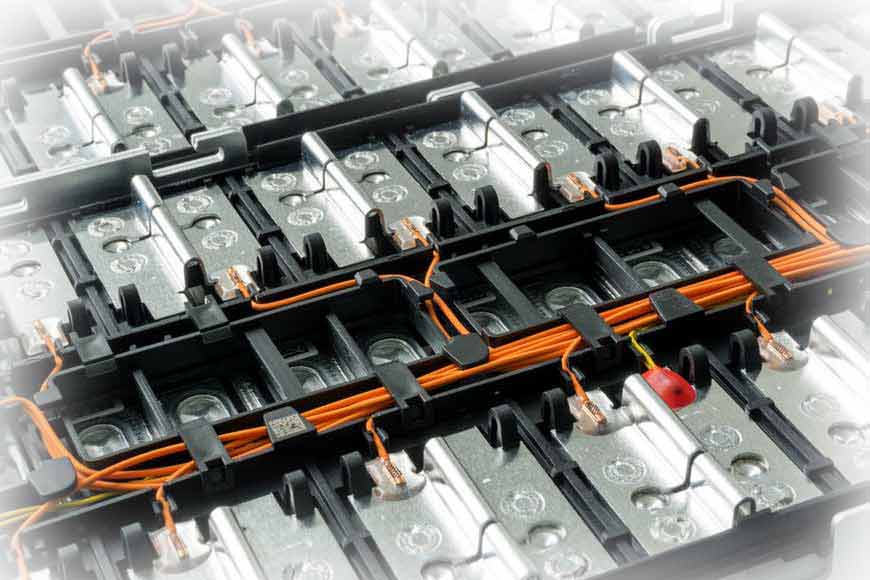A Bengali scientist trio discovers superior lithium-ion batteries to tackle the current energy crisis – GetBengal story

Three Bengali scientists who have been researching lithium-ion batteries, devising ways to make them more agile and clever by decreasing charging time, raising the energy density, and doubling the battery life, have succeeded in their efforts, and their discovery could be a game changer and mark the beginning of a new era in the world’s energy sector.
Smartphones have become an indispensable part of our daily lives. Consider how much we rely on our smartphones every day for communication, entertainment, information, and even for our professional lives. Smartphones have revolutionised the way we communicate with each other. With the ability to make calls, send messages, and video chat, listen to podcasts, take photos, and order goods online, we can stay connected with our loved ones from anywhere in the world. Additionally, smartphones have made it easy for us to use GPS navigation, access information, and stay informed about the world around us. We can use our phones to check the news, the weather, and even conduct research on various topics. They are essential for our professional lives as well. They are helpful for checking emails, scheduling appointments, managing work calendars, keeping track of important deadlines, and communicating with colleagues and clients.
In terms of entertainment, smartphones offer a wide variety of options. We can use them to listen to music, watch videos, play games, and even read books. They also provide us with social media platforms, where we can connect with friends and family and share our experiences with others. All this processing happens on a relatively small device. In addition, all that processing consumes battery energy.
A crucial component that powers our smartphones is the battery, which provides the energy needed to keep our devices running throughout the day. If the battery stops working properly, the phone is absolutely of no use. Batteries and similar devices accept, store, and release electricity on demand. They use chemistry, in the form of chemical potential, to store energy, just like many other everyday energy sources. For example, logs and oxygen both store energy in their chemical bonds until burning converts some of that chemical energy to heat.
Scientist couple Sudip Chakraborty, Reader and Head of 'Mates Lab' and 'Inspire Faculty' Tishita Das, of Harishchandra Research Institute, Allahabad (Prayagraj), and Professor Sarbajit Banerjee of Texas A&M University, US, recently published their research paper in the prestigious peer-reviewed scientific journal, 'Nature Materials.’ They have used a method called 'pre-intercalation' that has become an increasingly valuable approach to altering the properties of materials. Lithium-ion battery (LIB) technology has steadily improved over the past decade, and the team has used the 'pre-intercalation' method to create a battery that they hope will be a groundbreaker in the sphere of portable electronic devices, electric vehicles, and home energy storage.
In ‘Ask Your Target Market's latest survey, overall, 92% of smartphone owners said they consider battery life to be an important factor when considering a new smartphone purchase. 85% consider charging time to be an important consideration; 66% said they would even pay a bit more for a cell phone that has a longer battery life; and 61% said they would pay more for a phone that takes less time to charge. Smartphone manufacturing companies are working on methods that could improve battery life and decrease charging time on select devices.
Our absolute best battery friend these days is the lithium-ion battery (LIB). It powers our mobile phones and laptops, devices that have made a massive contribution to transforming our lives. In fact, of the current energy storage technologies, lithium-ion batteries (LIBs) are among the most suited for tackling the current energy crisis and are one of the most important energy storage technologies of the 21st century. There are several types of lithium-ion batteries. The main difference between them is their cathode chemistry. Different kinds of lithium-ion batteries offer different features, with trade-offs between cost, efficiency, and safety. You might wonder what is so special about lithium-ion batteries. Well, their main draw card is their energy density, meaning that a battery half the size of a NiCad battery will give the same amount of power. They are light, compact, and ideal for portable electronics.
Scientists are using new tools to gain greater insight into the electrical and chemical processes in batteries to produce a new generation of highly efficient electrical energy storage. For example, they are developing improved materials for the anodes, cathodes, and electrolytes in batteries.
A lithium-ion battery generates electricity through the chemical reactions of lithium. There are four essential components inside a lithium battery: the cathode, the anode, a separator, and the electrolytes. These basic components are, in many ways, the same as any other type of battery or electrochemical cell. With these four simple pieces, batteries can harness an incredible amount of lithium energy. Lithium ions move from the anode side of the battery to the cathode side while driving the device. The graphite in the anode contains lithium. However, since lithium is unstable in its elemental form, the combination of lithium and oxygen, lithium oxide, is used for the cathode. At the cathode, the lithium atom gives up one of its electrons and splits into two ions to combine with metal oxides. Electronic devices operate by passing negative ions, or loose electrons, from circuit to circuit on their way to the cathode through a metal wire. To balance the charge inside the battery, positive ions, that is, the rest of the atoms that have been stripped of electrons, travel through the lithium-salt solution to the cathode. Lithium ions make their way back to the anode while charging the battery. That is 'intercalation'. The two lithium ions coming from both sides of the metal oxide of the cathode combine separately to form new compounds. Its molecular bonds are super-strong and do not break easily.
The trio of Bengali scientists has used sodium and potassium with a chemical compound called vanadium pent oxide in the cathode instead of cobalt oxide and has observed a specific pattern in the arrangement of sodium and lithium atoms. Lithium and sodium atoms sit parallel to each other in a multidimensional pattern. The paper details this microscopic approach. They call it pre-intercalation. In this way, more ions can be captured at the cathode, and they can be sent back in a swarm, so the battery's health remains at its premium and increases its performance.
Professor Sudeep Chakraborty hails from Mandirpara in Tarakeshwar and is a former student of Narendrapur Ramakrishna Mission School. Tishita Das of Dumdum completed her doctoral research at the Indian Association for the Cultivation of Science (IACS), Jadavpur. Professor Sarbajit Banerjee is a resident of Kasba in south Kolkata.
India's recent discovery of lithium reserves in Ladakh’s Reasi district could potentially transform the country's energy landscape by providing a domestic source of this vital mineral. With an estimated reserve of around 1,600 metric tonnes, the three scientists are optimistic that their research will be a path-breaker for India's energy goals.










